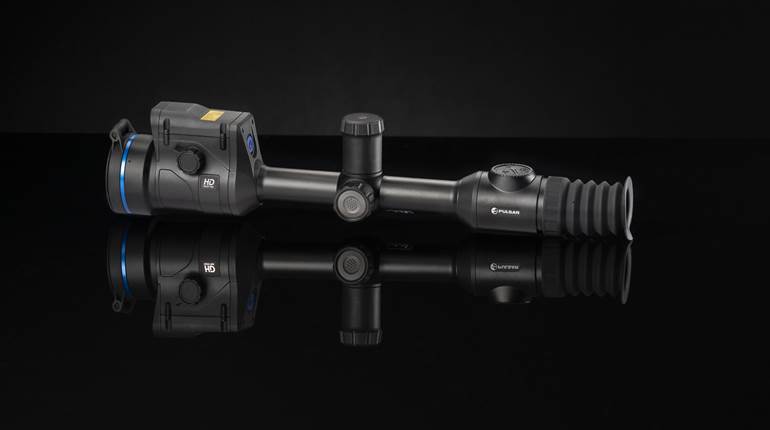The Hornady Ballistic Development Group, a specialty research and design group at Hornady Manufacturing, has developed a new line of match bullets—the A-Tip—designed for precision and long-range shooting. The bullet features a long, uniform, precision-machined aluminum tip. 
The A-Tip is a culmination of years of successful existing products like Hornday’s ELD-X and ELD Match bullet lines, combined with its use of state-of-the-art equipment like Doppler radar, high-speed camera systems, plus investment in advanced manufacturing machinery, processes and quality control measures, said Hornady engineers.
“We wanted to incorporate aluminum tips in a full line of match bullets for years because we can make longer tips than we can with polymer materials,” said Joe Thielen, assistant director of engineering. “This longer tip is a key component that helps move the center of gravity of the bullet rearward, thus enhancing in-flight stability and reducing dispersion.” Thielen said the problem has always been the cost to produce such a tip, but they have now developed a cost-effective process for manufacturing the aluminum tips.
The longer aluminum tips are machined to be caliber-specific, and when coupled with highly refined AMP bullet jackets, aggressive profiles and optimized boattails, the result is enhanced drag efficiency (high BC) across the board. Each bullet design is carefully crafted for minimal drag variability for the utmost in shot-to-shot consistent downrange accuracy.
The materials, design and manufacturing techniques combine for the most consistent and accurate match bullets available.
“We designed the A-Tip projectiles with accuracy and precision first and foremost,” said Thielen, adding that many low-drag bullets on the market today have very aggressive secant ogives, which look great on paper and yield high BCs, but usually are finicky when it comes to accuracy or performance in different chambers, standard twist rates, seating depths and barrels.
In addition to developing projectiles that will shoot well in a variety of chambers, the BDG also designed the A-Tip bullets with the right balance between the center of gravity of the projectile versus center of pressure to minimize in-flight drag variability.
The A-Tip bullets are also packaged sequentially right off the bullet press without being batch handled or tumbled, ensuring that each bullet in the box is a clone of the bullet before it—and after it.
The bullets will be available in 100-count boxes, and retailers will also sell sleeves of five sequential 100-count boxes packaged together, as well as a case pack of two 500-count sleeves for a total of 1,000 sequentially packed bullets. Since the bullets will not be touched or tumbled, there will be some slight oil residue, so a bullet polishing bag will be included with each 100-count box for the hand loader to use in preparing bullets for loading.
This change in manufacturing and packaging is a welcome and unique challenge for a company built on large-scale manufacturing, said Jason Hornady, company vice president.
“We are frequently viewed as a very large bullet manufacturer, which in many ways we are, but the Ballistic Development Group runs like its own small ‘skunkworks’ division that allows us to offer the small-batch craftsmanship normally only offered by a boutique bullet maker,” he said. “We’re shooters ourselves, and we also listen to what shooters want, and we are excited to be able to offer competitive and hard-core shooting enthusiasts projectiles that are undoubtedly the new standard bearer of precision and performance.”
Initial offerings of the A-Tip bullet include the following listings with Doppler radar measured G1 and G7 BCs:
- 6mm 110 grain G1: .604 G7: .304
- 6.5mm 135 grain G1: .637 G7: .321
- 6.5mm 153 grain G1: .704 G7: .355
- 30 caliber 230 grain G1: .823 G7: .414
- 30 caliber 250 grain G1: .878 G7: .442
Use of a new A-Tip bullet seating stem is required for optimal bullet seating. Please visit hornady.com for full details. See Hornady's video on the new A-Tip here.
A-Tip bullet BC values have been measured at Mach 2.25 and corrected back to International Civil Aviation Organization (ICAO) Standard Atmosphere (sea level, 59 degrees F, 29.92 inHg, 0% humidity).
Visit hornady.com/BC for BC values measured at Mach 2.0 and Mach 1.75 for calculating trajectories when shooting long distances.
Use of the Hornady 4DOF ballistic calculator with pre-populated A-Tip bullet drag curves will provide the most accurate calculations. Visit hornady.com for full details.

























